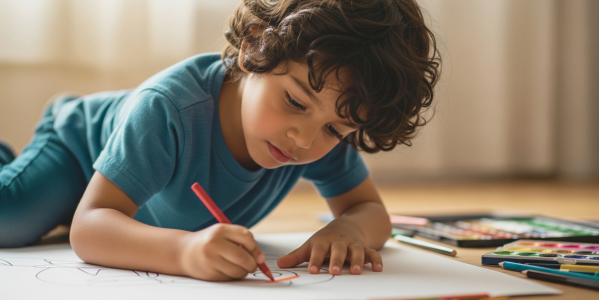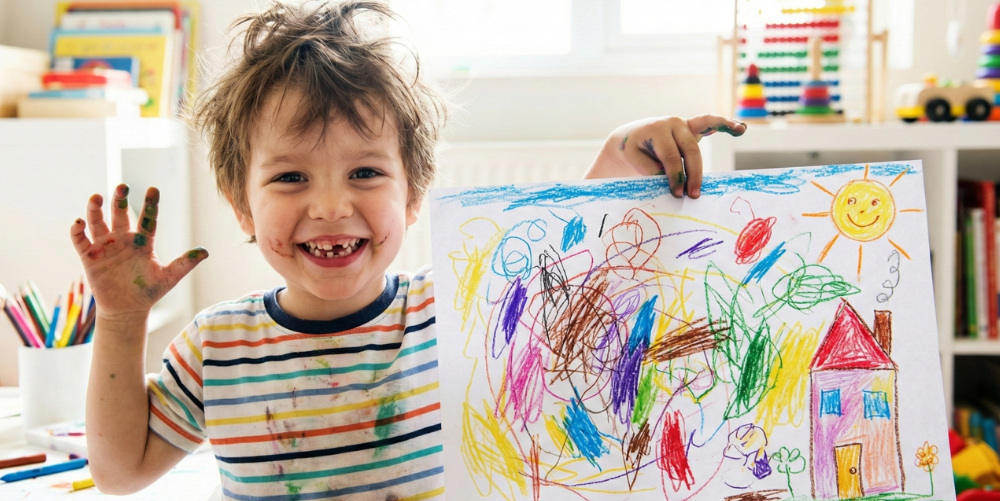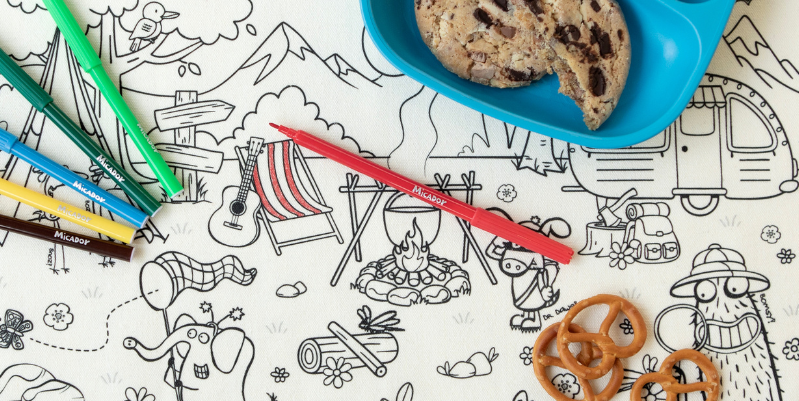Let's be honest – making art can sometimes be tough on the planet. But here's the good news: creating beautiful work and being environmentally conscious can absolutely go hand-in-hand. At Micador, we've been on our green journey since 2010, and we've picked up a few practical tips along the way.
Start Where You Are
You don't need to overhaul your entire studio overnight. Begin by simply taking stock of what you already have and identifying your main sources of waste. Is it packaging? Unused materials? Water waste? Sometimes the simplest changes – like adding a recycling bin beside your workspace – make the biggest difference.
Rethink Your Materials
Extend the Life of What You Have
Quality brushes should last for years, not months. Our Micador For Artists brushes are designed for longevity, but even the best tools need proper care.
Quick brush revival tip: For brushes with dried paint, soak bristles in warm water with a drop of mild soap. Gently reshape and lay flat to dry. For stubborn paint, a gentle massage with mild soap can work wonders without harsh chemicals that damage bristles and waterways.
Choose Sustainable Materials
When selecting art supplies, opt for products made with sustainability in mind:
Brushes crafted from FSC 100% certified wood, like Micador For Artists' brush range
Canvas boards made with FSC-certified materials that support responsible forestry
Products with minimal plastic packaging or recyclable containers
Micador's commitment to sustainability is evident in our green eARTh collection, where we prioritise environmentally responsible options without passing the cost on to you.

Buy Mindfully
Before purchasing new materials, ask yourself:
Do I already have something similar?
Can I buy a refill instead?
Is there a more sustainable alternative?
Would a smaller size do?
Studio Setup for Sustainability
Create a Scrap Station
Set up a specific place to collect usable scraps – paper offcuts, dried paint from your palette, or emptied packaging that could be repurposed. These "leftovers" often become the starting point for unexpected creative breakthroughs.
Try this: Use an old jar to collect dried acrylic paint skins from your palette. These can be incorporated into collage work later.
Water-wise Practices
Water waste is one of the biggest environmental impacts in many studios. A few simple changes can make a significant difference:
Use two jars for water when painting – one for initial cleaning and one for final rinsing
Let sediment settle in used water, then pour the clear water off the top for reuse
Consider using a container with a sieve that separates paint particles from water
These simple techniques can greatly reduce water consumption while maintaining proper brush care.
The Art of Reusing
Creative Packaging Repurposing
Those FSC-certified boxes our Micador products come in? They're designed to have a second life as storage, shipping containers for your artwork, or even mini canvases for experimental work.
From Trash to Tools
Some of the most interesting mark-making tools come from items typically destined for the bin:
Old toothbrushes create fantastic spatter effects
Credit cards make excellent painting knives for creating texture
Wine corks can be carved into custom stamps
Mesh produce bags create interesting texture when pressed into wet paint
Waste-Free Techniques
Mix Only What You Need
One of the biggest sources of waste in painting is mixed paint that dries out before use. To minimise this waste:
Start with smaller amounts and mix more as needed
Document your colour recipes so you can recreate them exactly
Store leftover paint in airtight containers when possible
Embrace Digital Planning
Use digital tools for planning before committing to physical materials. This doesn't mean abandoning traditional art – it means being more intentional about it.
Think Circular
The most sustainable approach is circular – where "waste" from one project becomes the raw material for the next. Keep a "creative compost" box where failed experiments and offcuts go. It might become your first source of inspiration for new work.
When You Do Need New Supplies...
Sometimes you just need new materials. When that time comes:
Look for products with minimal packaging
Choose products made with FSC-certified materials
Opt for items with recyclable components
Support brands committed to sustainability
Our green eARTh collection contains products made with 100% FSC-certified, recycled, or recyclable materials. We decided not to pass on the cost of going green because we believe sustainable art should be accessible to everyone.

Small Steps, Big Impact
Creating a zero-waste studio doesn't happen overnight. It's about making thoughtful choices, one project at a time. The most sustainable art practice is one you can actually maintain, so start with changes that feel doable.
Remember, the goal isn't perfection. It's progress. And sometimes the constraints of working more sustainably lead to the most innovative artistic breakthroughs.
After all, creativity thrives within limitations. And what better limitation than one that helps ensure future generations of artists will have a beautiful world to create in?
What steps have you taken toward a more sustainable art practice? We'd love to hear your ideas - tag us in your zero-waste studio solutions on social media.
Micador has been creating sustainable art supplies since 2010. Check out our green eARTh collection and Micador For Artists range at micador.com.au.



